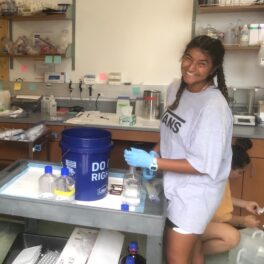Groundbreaking new research at SOEST could change weather forecasting here in Hawai‘i in just a few short years by tapping into new weather satellites to provide weather info never before available. The vast ocean surrounding Hawai‘i causes a big void when it comes to land- based weather data. Scientists like Steven Businger, professor of Atmospheric Sciences, think they have an answer for that: tapping into new advanced polar orbiting satellites. Traditional geostationary weather satellites orbit about 36,000 km above the earth’s surface while polar orbiting satellites are at about 400 km, providing a much clearer weather picture.
Read more about it and watch the video at KITV4 (autoplays).














